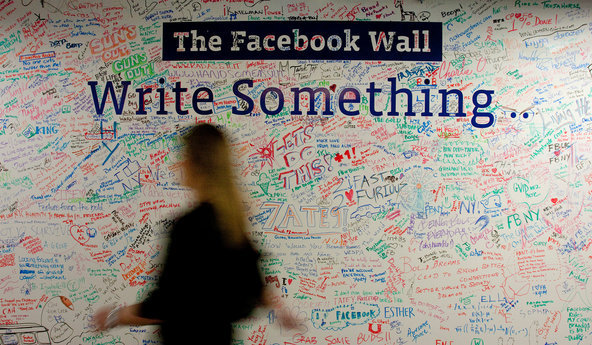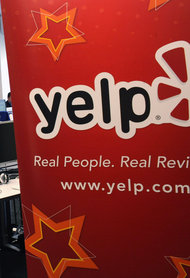 Scott Eells/Bloomberg NewsA wall at Facebook’s New York office is signed by employees. The company may go public in 2012.
Scott Eells/Bloomberg NewsA wall at Facebook’s New York office is signed by employees. The company may go public in 2012. Spencer Platt/Getty ImagesYelp, the online review service, may also go public this year. Demand for initial public offerings is mixed.
Spencer Platt/Getty ImagesYelp, the online review service, may also go public this year. Demand for initial public offerings is mixed.
It will take more than Facebook to heat up the tepid market for initial public offerings.
As conditions remain fragile, the backlog of public offerings has continued to grow. More than 200 American companies are now waiting to go public, the highest number in roughly a decade, according to Renaissance Capital, an advisory firm.
Demand is mixed. Investors are eagerly anticipating an offering from Facebook, which is expected to go public in the second quarter at a market value of $100 billion. But other companies — including Toys “R” Us, Yelp and the Carlyle Group — may not get such a warm reception.
Facebook “will bring a potentially unprecedented amount of attention to the I.P.O. market,” said Peter Falvey, a managing director at Morgan Keegan, an investment bank. But, he said, “its I.P.O. in all likelihood won’t have a tremendous impact on the ability of other companies to execute offerings.”
The problem is that investors are still recovering from 2011. About 70 percent of the companies that went public in 2011 are trading below their offering prices, according to Kathleen Smith, a principal at Renaissance Capital.
Wary of risk, investors have gravitated toward more established stocks in recent months. In 2011, the Renaissance Global I.P.O. Index, which tracks recent public offerings, tumbled 20.6 percent. By comparison, the Standard Poor’s 500-stock index, which tracks large-cap companies, was relatively flat for the year.
“Deals will come, but at least initially, investors are likely to look carefully at pricing,” said Brian Reilly, head of United States equity capital markets for Barclays Capital.
Last year started with promise, with a rising tide of confidence in the equity markets and an exuberance for the new generation of Internet companies. A string of technology offerings, like LinkedIn, the professional social network, and Yandex, the so-called Google of Russia, posted at least double-digit gains on their debuts. In the first half of 2011, 78 companies went public in the United States, raising $25.6 billion, more than double the amount raised in the period a year earlier, according to data from Renaissance Capital.
But the rally was short-lived. With trouble in Europe and growth in the American economy remaining sluggish, volatility ruled the markets in the late summer, effectively shuttering the market for public offerings. In the second half of the year, a total of 448 companies went public worldwide, raising $55.6 billion, a 68 percent drop from the second half of 2010, according to data from Thomson Reuters. The markets in Asia were among the hardest hit, with I.P.O. volume plunging nearly 73 percent, to $32.7 billion, during the period.
Several well-known brands managed to go public in November and December, including Groupon, Zynga and the fashion retailer Michael Kors. But many of the companies that went public in the second half of 2011 have struggled to hold on to early gains. Groupon, the daily deals site, has seesawed wildly. Its stock now stands at roughly $19, just below its initial price. Zynga, which went public in mid-December, has never closed above its offering price of $10 a share.
“The market got ahead of itself,” said Jeffrey H. Bunzel, the head of equity capital markets for the Americas for Credit Suisse. “Earlier in the year, there were unrealistic expectations. Since then the macro environment has definitely come down.”
With returns still depressed, many analysts say they believe 2012 will continue to be a challenging one for public offerings. Many companies hoping to go public will have to cut their prices or the size of their offerings to match investor appetite, they say.
“We don’t believe investors will be very comfortable investing in this I.P.O. market because they are still nursing inferior returns for recent I.P.O.’s.,” Ms. Smith said.
Despite the muted backdrop, the number of companies waiting to go public is growing. Nineteen companies filed to go public in the United States in December, nearly 50 percent more than in December 2010. The modest uptick was a notable increase compared with the doldrums of September, when there were zero filings.
Private equity is also expected to be a major driver of offerings in 2012. Deals backed by private equity made up more than half of the total volume in the United States last year, including multibillion-dollar offerings from the hospital company HCA and the pipeline operator Kinder Morgan. But most of the activity came in the first six months, amid favorable conditions, and buyout shops are facing increasing pressure to liquidate maturing portfolios.
“Financial sponsors have a very large portfolio of companies looking to access the public markets,” Mr. Bunzel said. “The level of participation may be even higher this year, frankly.”
While the majority of the public offering market is closely tied to the finicky winds of today’s stock markets and the fortunes of Europe, many analysts say they believe Facebook will be a singular event. The social network, which has nearly a billion users, is expected to attract a bevy of investors at home and abroad.
A strong debut from Facebook will not be a cure-all for the feeble public offering market, analysts say. A flop, however, could deal a hearty blow.
“In the somewhat unlikely event that the valuation or aftermarket performance of Facebook’s I.P.O. is disappointing,” Mr. Falvey of Morgan Keegan said, “then there could be a hangover effect whereby investors think, if even Facebook’s I.P.O. was disappointing, what does that mean for the prospects of other companies?”
Article source: http://feeds.nytimes.com/click.phdo?i=b5a72ea570a74332cea7b18fb58cd264